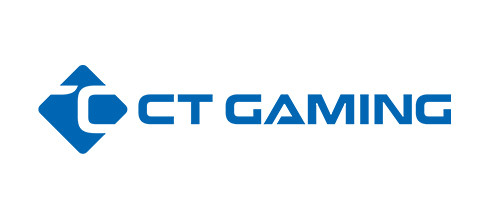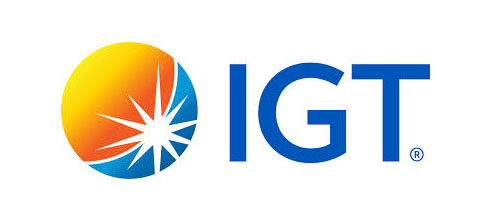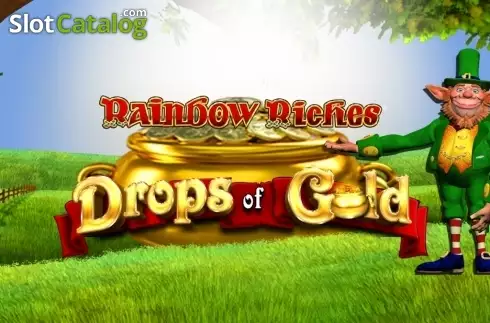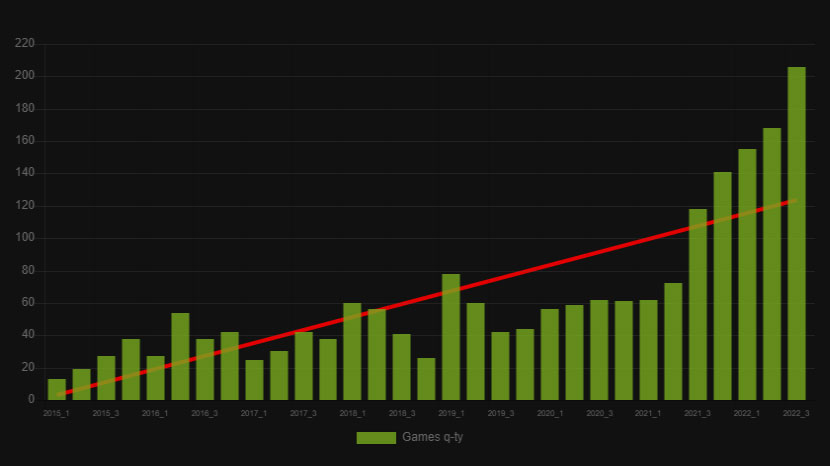All you need to know about the slot game metrics RTP, Variance & Hit Frequency
Learn the details about the RTP metric and how the RTP level might vary in one and the same game. After reading this article you will have a good understanding of how slot games work and what to be aware of.

Topics in this guide:
- Intro
- What is RTP?
- Being aware of the Variance and Hit Frequency metrics
- The random chance of winning and fair payouts
- What you should know about RTP for progressive slots and jackpot games
- How is the RTP for a slot game decided?
- Is it true that the RTP can differ for a game?
- Staying informed about games with several different RTP settings
- Data on games with customizable RTP’s
- FAQ
Intro
Since you’ve already found SlotCatalog, chances are you’re already aware of the basics of RTP and Variance.
If that’s not the case, don’t worry about it. In this article we will start by explaining these metrics in a simple way.
After the basics we will go into the details of the RTP metric and how the RTP level might vary in one and the same game. After reading this article you will have a good understanding of how slot games work and what to be aware of.
What is RTP in slots?
RTP is an acronym stands for Return to Player and is a theoretical metric that shows the expected payback percentage of slots. It is calculated using simulations of hundreds of millions or billions of game rounds, so its value carries weight over long distances.
Generally speaking, when talking about casino games, “the house edge” is a commonly used term. For example, french roulette is said to have a house edge of 1.35%. This means that the casino expects to win that percentage of your bet each time you make a wager, in the long run. This is the fee that the casino charges for providing its services, and letting you gamble. At a poker table this fee would be called rake.
When speaking about slot games, RTP is the commonly used metric to describe the payout. This metric is on the opposite side of the house edge, which describes the casinos expected win in the long run. Let’s describe it with an example:
Starburst has a RTP of 96.09%, which means that you can expect to be paid $96.09 for each $100 you bet (in the long run). The house edge for the casino here is 100% - 96.09% = 3.91%
Starburst Slot
NetEnt

It is really important to understand the concept of “the long run”. When we mention this term we mean that this is the expected result over a huge amount of spins, like one billion spins. Shorter periods of time, or rather, smaller amounts of spins do not always end up close to the expected long-run result. And to be clear about this, 50 000 spins is considered a small amount in this aspect. A lot of unexpected things can happen when you gamble so you should make sure to never bet money you can’t afford to lose.
Being aware of the Variance and Hit Frequency metrics
As previously mentioned the RTP metric will tell you how much you’re expected to be paid back over time (in the long run) it can actually take a huge amount of spins to see numbers close to this theoretical number.
Why is that? It’s because when slot games are produced their mathematical formulas also decide how this payback amount should be paid out. This means that one game might pay larger sums (High Variance) but less often (Low Hit Frequency) while other games pay out smaller sums (Low Variance) more often (High Hit Frequency). And as is the case with progressive slots, one lucky player might take a lot of the total payback sum in the form of a Jackpot.
The Hit Frequency is a metric that describes how often a player will land a winning combination. This metric can be used in-game product sheets and displayed online for either any winning combination or a specific feature in the game like a specific Free Spins mode or bonus game. Let’s explain it with a simple example:
A slot game has a Hit Frequency of 8% which means that 8% of the spins played, will trigger any type of win (in the long run).
With that said, just as with the RTP it is important to understand that due to the randomness in the game, the outcome may differ heavily from this theoretical metric. It is unlikely, but not impossible that both the following scenarios can happen:
- You play 100 spins and trigger winning combinations 62% of the time instead of the expected 8%.
- You play 100 spins without any winning combination instead of the expected 8%.
This subject leads us into the statistical metric that is called Variance. At SlotCatalog you can see the Variance metric for games as well, classified as:
- Low
- Low-Medium
- Medium
- Medium-High
- High
Simply explained, the Low Variance games will pay smaller wins more often while the High Variance games will pay out larger wins less frequently. You can read more about our categorization of variance in the FAQ.
The random chance of winning and fair payouts
As discussed these metrics are very theoretical and these numbers are based on millions of spins. The important thing to know is that your outcome in a game, whether it’s above or below the expected results, is subject to change as they are governed by the Random Number Generators, also known as RNG. The Random Number Generators make sure that the results are unbiased. Simply put:
The chances of winning are always the same which makes the casino games fair.
This means, every spin is independent and does not have any connection to previous spins by you or other players. Any talk about hot and cold slot machines (machines that just paid out etc) is just a myth unless the game plays at a different RTP level than the base setting. You can find out more about this in later in this article under the topic: About games with several different RTP levels or settings or in our Hot and Cold section where you can see live data from a couple of casinos.
What you should know about RTP for progressive slots and jackpot games
When it comes to progressive slot games or jackpot slots the Return to Player payback can be divided into two different types. One part of the RTP is the base game payback, which you get paid by landing winning combinations when playing the base game. The other part of the RTP in a progressive slot is the jackpot payout, which is only paid out by hitting a jackpot. As Jackpots are usually big wins it means that in reality, there are very few players who get a large piece of the Jackpot payback part.
Five popular Video Slots with exceptionally high payback
A selection of 5 Classic Slots with high RTP
Jackpot slots with the best payout
Looking for a wider selection of high RTP casino games of different types? Head over to our section of the Best Ranked Games and select your preferred filters and sort by RTP.
What is the average RTP among slot games?
The 96% value is often considered the standard when it comes to slots' RTP. However, you should not take that for granted, and we offer you to take a look at actual statistics.
How is the RTP for a slot game decided?
The Return to Player metric for a slot game is based on the math fundamentals in the specific game. Due to the math formulas in the game, the payout will be at a specific level over a substantial amount of bets.
So how is the RTP metric displayed by game providers and online casinos decided? The theoretical RTP parameter is set from the simulation of 1 billion rounds on the game server. To get a license from a gambling authority the game provider should pass the certification process and an independent auditor should check game server simulation. This audit then verifies that the announced RTP is correct.
Some gambling authorities have enforced regulations to have the actual RTP monitored over time for released and initially verified games as well. They do this to make sure that the game metrics that are published are accurate so the players have the best information possible. One example of this is the United Kingdom Gambling Commission, you can read more about it in their article Live RTP performance monitoring of games of chance.
Is it true that the RTP can differ for a game?
Yes, this is the case with some specific games and some game providers. We’ll go into the details of the different cases here, and give you recommendations on what actions you can take to make sure you are properly informed about the game you want to play.
Basically, in today’s slot game industry the RTP level of a game can differ based on four different factors:
- As known by well-oriented players and people in the industry, some game providers certify their games at several different RTP levels, giving the operators a way to adjust the specific setting for their service.
- Some games providers have produced games where the player is presented with an in-game choice that affects the RTP. This can be a character selection, mode selection or similar.
- Some games have different RTP levels based on the player’s selected bet size.
- Some games have different RTP levels based on the player’s selected paylines.
Staying informed about games with several different RTP settings
Some players have thought that because of regulation and game licenses the RTP metric is fixed for a specific game. This is not the case today. Several operators have started to license their games on several different RTP levels. In the case of Malta Gaming Authority licenses, games can be licensed as long as the RTP level stays above the 85% mark. A game can be certified for one level of RTP % or at several different levels.
SlotCatalog is of the opinion that it’s crucial that the online casinos are transparent about this towards the players. As more game providers get their games licensed on several RTP levels and provide the possibility for casino operators to choose what RTP level they want to run the games on, it’s important that players easily can find out what current settings apply to a specific game.
This is why we’ve collected data and put up information boxes for all games that have customizable RTP levels.

These customizable levels of RTP open up different opportunities for casino operators to go about their business. Some operators may lower the game RTP and spend some of the additional income on bonus promotions and improving other parts of their service. Others see the possibility to compete by offering their player a higher RTP, positioning themselves as a low-cost producer. An example of the latter is Unibet and their related brands which have spent a good amount of money on a Swedish Television campaign that promotes that they’ve raised the RTP to 98% on several slot games.
These changes in the industry also provide opportunities for game providers to brand themselves in a way that they see fit. For example, some challenging game providers have started to appreciate this opportunity. Some release games with above-average RTP and others have announced Fixed RTP as a counter-strategy to the recent customizable RTP levels.
Whatever directions individual operators and game providers choose to take we at SlotCatalog think it’s truly important that the industry is transparent about these settings, making them easily accessible and visible to the player. Without that, the trust between players and operators will fall substantially as we have already seen some real-world examples of.
As this is an important matter for the industry it would not be unreasonable if regulation authorities were to incorporate appropriate measures into the compliance guidelines, securing that the information is easy to find for the players. SlotCatalog aims to have RTP information for all games, but in-game start popups displaying the current RTP level as well as RTP changes depending on gameplay choices, bet sizes, and pay lines might be a better way for the industry to go about it.
Data on games with customizable RTP’s
| # |
Provider |
Total |
Games with |
|---|---|---|---|
| 1. |
 KA Gaming
KA Gaming
|
648 | 476 |
| 2. |
 Pragmatic Play
Pragmatic Play
|
539 | 449 |
| 3. |
 CT Gaming
CT Gaming
|
262 | 415 |
| 4. |
 Spinomenal
Spinomenal
|
489 | 391 |
| 5. |
 Play'n Go
Play'n Go
|
371 | 336 |
| 6. |
 Red Tiger
Red Tiger
|
305 | 288 |
| 7. |
 NetEnt
NetEnt
|
305 | 194 |
| 8. |
 IGT
IGT
|
309 | 181 |
| 9. |
 Wazdan
Wazdan
|
200 | 164 |
| 10. |
 Amatic Industries
Amatic Industries
|
209 | 160 |
| 11. |
 Habanero
Habanero
|
189 | 158 |
| 12. |
 Merkur
Merkur
|
152 | 151 |
| 13. |
 Betsoft
Betsoft
|
272 | 142 |
| 14. |
 Games Global
Games Global
|
557 | 139 |
| 15. |
 Blueprint
Blueprint
|
320 | 138 |
FAQ
Will playing at slots with higher RTP increase my chance of winning?
Yes, it will, in the long run. However, it’s important to understand that the “long-run” might take a huge amount of spins before the outcome comes close to the expected result. This varies depending on the variance of the slot games in question.
Is it better to play slots with High Hit Frequency?
No, it all depends on your preference. If you prefer to win often, but smaller wins you should play games with a High Hit Frequency with low variance. On the other hand, if you prefer to win big when you win, you should play games with a low Hit Frequency but high variance.
It seems branded slots often have lower RTP, why?
Profit from an online slot generally goes to the online casino you play at and they pay the game provider their cut. In the case of branded games, there is often an extra fee to use the franchise from whoever owns it. That is why the RTP may be lower on branded games.
What does the Max Exposure metric on SC mean?
Max exposure is a metric that describes what maximum win a game has. Simply explained it is how big the multiplier is if you manage to win the maximum win for your bet.
How does the SC variance classification work?
On SlotCatalog you will see the variance described from low to high, with a total of five different levels. We use this classification as it’s the most common classification in-game specification sheets.
Do all game providers use this low to high classification?
No, a few game providers out there classify their variance in other scales. Examples of this are Elk Studios who use the scale of 0-10 and 2by2 Gaming who use the 0-100%. In these cases, we convert their scale to the five-level low to high variance scale.
I’m really into stats, what do these levels really mean in terms of variance and standard deviation?
| SC Volatility levels | L-M-H | Variance | Standard deviation |
|---|---|---|---|
| LOW | Low | 20-25 | 4,5 |
| LOW-MED | Low-Medium | 25-35 | 5 |
| MED | Medium | 35-50 | 6 |
| MED-HIGH | Medium-High | 50-65 | 7 |
| HIGH | High | 65-100 | 8 |
| VeryHigh | 100-125 | ||
| UltraHigh | > 125 |







































